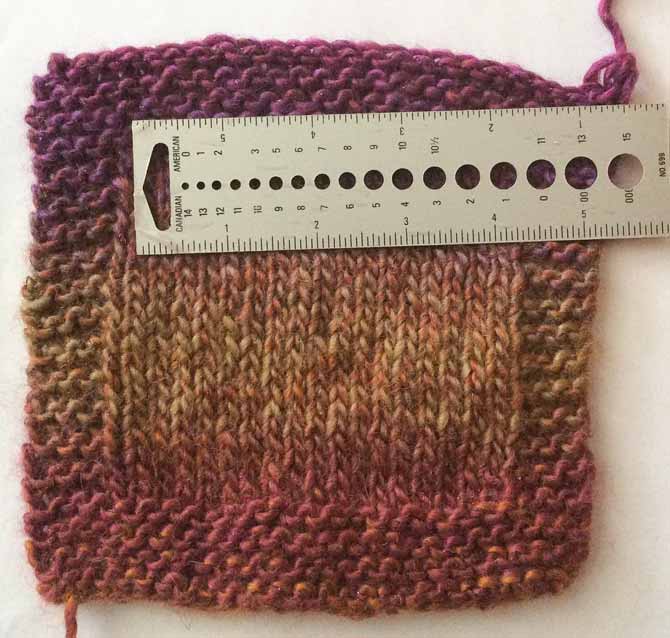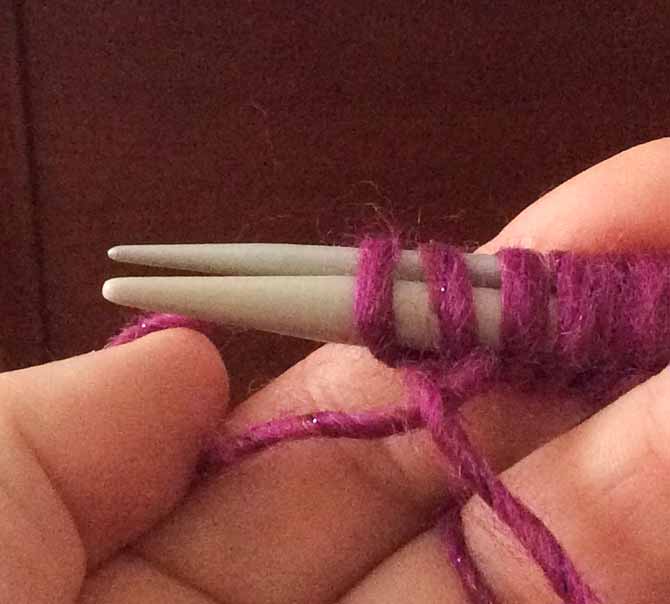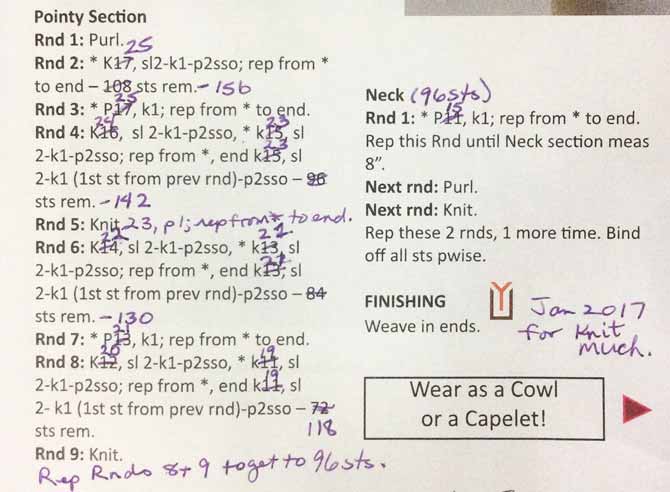This week we’re having some fun with several of the Universal Yarns that were featured in KNITmuch in 2016.
Yesterday’s post, knit a cowl by chance with Bamboo Bloom yarn. Today, we’re going to work with Classic Shades Metallic. Charles Voth reviewed this yarn in his August 2016 KNITmuch posts.
One of the questions I’m asked most often at Canadian Guild of Knitters is how to adjust a pattern for a different yarn. I found a pattern I liked in a collection of quick cowls — a free download from the Universal Yarn website, the Get to the Point Cowl.

The Get to the Point Cowl pattern is written for a chunky yarn, but our yarn is Aran weight.
Problem is, this pattern is written for Classic Shades Frenzy, and I have Classic Shades Metallic. Oh, they sound close enough, but Frenzy is a chunky weight yarn with a recommended tension of 13 sts and 17 rows to 4″ [10cm] on 10.5 [6.5mm] needles. Classic Shades Metallic, on the other hand, is an Aran weight yarn with a recommended tension of 18 sts and 24 rows to 4″ [10cm].
The next wrinkle is that the pattern calls for size 11 [8mm] needles, and the pattern tension is 12 sts and 18 rows to 4″ [10cm]! How are we going to make our yarn fit?
Let’s look at what we know.

I must have knocked my ruler when taking this photo — ordinarily it would run evenly across the row.

When substituting yarn, good note taking is important — the day may come when you want to make another one of these!

Any of these stitch markers can be linked right into the knitted fabric to provide visual reference

To make a loose cast on, hold a second, much smaller, double pointed needle alongside your cast on needle. Allow the sts to slide off the end of the smaller needle as you make the cast on — at that point it’s the same thing as the stitches sliding down onto the cable of the circular needle.

The stitch markers are placed, and I’ve completed the first repeat of Round 4

The finished pattern edits to take your cowl from a chunky yarn to an Aran weight

Happy result. I had to tear out about half of my tension swatch to finish this piece, so it took just about 98 grams of yarn. The “sparkle” is SO subtle, but it’s great for everyday wear!
This is part 3 of 5 in this series.
Go back to part 2: Knit a cowl by chance with Bamboo Bloom yarn
Go to part 4: 2 tips to elevate your scrap yarn project to a professional level
